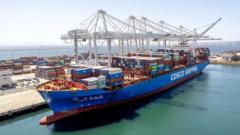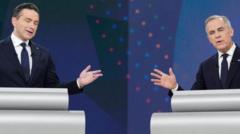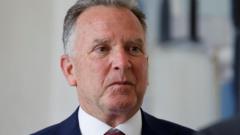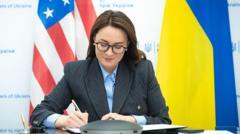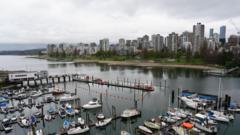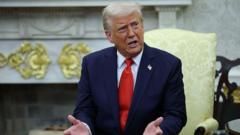The shifting roles within Trump's tariff team were exposed as Treasury Secretary Scott Bessent emerged as a calming presence, contrasting sharply with more hawkish figures like Commerce Secretary Howard Lutnick and trade adviser Pete Navarro. This article delves into how their contrasting strategies reflect broader tensions within the administration and impact market reactions.
Inside the Turbulent Tariff Talks: The Battle of Good Cops and Bad Cops in Trump's Administration

Inside the Turbulent Tariff Talks: The Battle of Good Cops and Bad Cops in Trump's Administration
An exploration of the inner workings and dynamics of Trump's tariff decisions, highlighting key players and their differing approaches in the chaotic policy landscape.
In the whirlwind moments following President Donald Trump's unexpected suspension of extensive tariffs on multiple countries, Treasury Secretary Scott Bessent emerged as the prominent spokesperson, markedly distinguishing himself from his more aggressive colleagues within the administration. Addressing a crowd of reporters, the seasoned finance executive described the pause as "courageous," indicative of shifting power dynamics in the White House amid intense scrutiny from the business sector.
Despite the expected presence of Commerce Secretary Howard Lutnick and trade adviser Pete Navarro, both were conspicuously absent from the press conference after the April 9 announcement that invigorated the stock market. This shift in who communicates tariff policies paints a complex picture of how internal alliances play a role in economic decisions. "Bessent is playing the good cop," remarked William Alan Reinsch, an expert in trade policy, while Lutnick and Navarro align more with the hardline stance often found in Trump’s economic discussions.
In a backdrop where much remains unspoken publicly regarding this decision, it was apparently Bessent's outreach to business leaders that helped tilt Trump's thinking. With calls to the president aboard Air Force One and discussions in the Oval Office leading up to the tariff pause, his prior reluctance regarding robust tariff policies seems to have offered a unique perspective that resonated with Trump at a crucial moment.
"The bond market had Trump’s ear," noted Mr. Reinsch, who highlighted that effective influence within the administration hinges on presenting alternatives rather than outright condemnation of Trump's viewpoints. The navigation of these complex dynamics became apparent in a meeting that included Bessent, National Economic Council director Kevin Hassett, and Lutnick, while absent figures raised eyebrows about possible shifts in influence among trade advisers.
The absence of pivotal players, such as US Trade Representative Jamieson Greer, from key discussions also filled the air with speculation. As officials grapple with differing messages on tariff strategies, trade enthusiasts have voiced frustrations with the mixed signals emanating from the administration. "They are not harmonizing their actions," stated Mark Sobel, a veteran from the Treasury Department.
The intentional dissemination of various spokespeople by the Trump administration seems to have left both markets and observers disoriented. Pangaea Policy founder Terry Haines suggested this multi-faceted communication could serve as a strategy to showcase diversity in thought but ultimately lacks clarity, further confusing financial markets.
While Navarro, known for his hard-hitting approaches to economic policies, has occasionally been sidelined due to his past controversies, his differing rhetoric still resonates with a specific audience. As market reactions depend heavily on these conflicting perspectives, Bessent's anticipated rise as a principal voice in tariff policy suggests an effort to establish a more coherent and, ideally, stabilizing strategy.
Experts anticipate Bessent's evolving role could ultimately provide much-needed clarity, allowing investors and corporate strategists to navigate what has been an unpredictable economic climate. As businesses seek assurance, a unified approach from the administration may pave the way for future economic stability.







